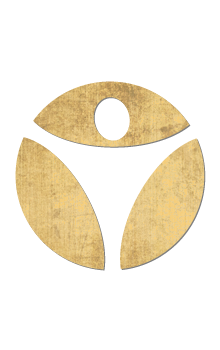How To Do Chair Pose For Beginners| New To Yoga? Watch Out For These Common Mistakes!
- Updated on: July 8, 2022
CHAIR POSE

Purpose
Here are some of the reasons why Chair Pose is good for you:
- Increases strength and stability in the lower body
- Specifically strengthens and invigorates feet, ankles, thighs, hips/glutes and core
- Improves range of motion of the shoulders
- Can alleviate lower back discomfort by improving strength and efficiency of core support
Pose Guide
To do Chair Pose correctly, here are the steps:
- Begin standing with your feet hip’s width apart.
- Bend your knees and lower your body as if you are sitting down in an invisible chair. Eventually, your thighs will be parallel to the floor.
- As you lower your seat, lift your arms over your head in a parallel position. This is similar to the “touchdown” motion in American football, with elbows straight and palms facing each other.
- Lower your shoulder blades away from your ears and down toward your hips, widening your shoulders as you do so.
- Keep the knees in line with the hips. Don’t let them splay out away from each other.
- Keep your chin parallel with the floor and elongate the back of your neck to lift the crown (top) of your head to the sky.
- Feel each inhalation expanding along each spine’s vertebra and out into the low back and sides. Let each exhalation draw the belly in to send the breath down into the thighs, legs and feet.
- To release, return to standing while lowering the arms back down by your sides. Use your feet to initiate the action of standing, keeping the core engaged so as not to overtax the low back.
Practical Tips
Do This, Not That! Common mistakes beginners make:
1. Arching the back:
It is common for beginners to stick out the tailbone and the chest during this Pose, creating an arch in the spine. This can give a false sense of balance and elongation in this challenging Pose. Arching the back can lead to strain over time, and even compression of the discs, especially in the lower spine. Tucking the tailbone slightly while drawing the belly in toward the spine and gently drawing the lower ribs in toward each other is the correct way to strengthen the core and protect the back during Chair Pose.
2. Raising the shoulders toward the ears:
There is a tendency to raise the shoulders toward the ears when raising the arms overhead. This can make it seem like you are getting a long stretch through the arms. However, shrugging the shoulders up during this Pose puts more tension on the shoulders. Instead, lower your shoulders down away from your ears while lifting your hands toward the sky. You will feel the stretch in your arms rather than feeling the tension in the tops of your shoulders and neck.
3. Compressing the neck:
It is common for beginners to stick out the chin and lift the face toward the sky in this Pose. Doing this can make it feel like you are stretching taller, but you are not. To get taller in this Pose, stretch your spine. Tilting the head forward and up compresses the bones in the back of the neck, paving the way for future pain and injury. The best position for the head is to lengthen the back of the neck, lifting the crown of the head toward the sky. Keep the chin slightly lowered so that it is parallel with the ground.
4. Incorrect alignment of the feet and knees:
Another common misalignment in Chair Pose is to have the feet or the knees wider than the hips. To avoid any uncomfortable pinching or sciatic Discomfort, it is important to stack the joints of the legs to create a stable foundation. Begin with the feet directly under the hips, and keep the knees hip’s width apart the whole time. If you have tight hips, the knees may try to widen out away from each other. See the modifications below for how to address this issue.
5. Weight in the toes:
Weight distribution in the feet can challenge beginners in Chair Pose. Be sure to evenly distribute your weight through your feet so that you are pressing through your heels as well as your toes.
Props and Modifications
You should consider a modification if you experience the following:
- Discomfort in the hips or knees
- Excessive back pain/discomfort or tension
- A burning sensation or other Discomfort in the feet/ankles
- Discomfort or restriction in the shoulders
1. Discomfort in the hips or knees:
If your legs are too weak to hold the Pose without stressing your joints, you can practice with your back against a wall to provide additional support while you gain the strength to perform it freestanding.



2. Excessive back pain/discomfort or tension:

Practice this pose with your back against a wall to provide a level surface to act as a guide for positioning your spine.
3. A burning sensation or other Discomfort in the legs, ankles or feet:



4. Discomfort or restriction in the shoulders:
Raise the arms only to shoulder height in front of you as if you are passing an imaginary box to a person in front of you. Be sure to keep your shoulder blades sliding down your back away from your ears.


Pointers
Answers to frequently asked questions
- What muscles does Chair Pose work?
- Is Chair Pose safe for knees?
- Should I stick my tailbone out or tuck it under in Chair Pose?
- When is Chair Pose contraindicated?
- How far back or forward do I sit in Chair Pose?
- Should feet be together or apart in Chair Pose?
- What do I do if I feel pinching in my back in Chair Pose?
1. What muscles does Chair Pose work?
- Chair Pose actively engages many muscles in the body. The most notable places to feel this Pose are thighs, glutes, core, arms and feet. There is a particular focus on the rectus femoris muscle (the middle of the front thigh) and hip flexors (muscles that bridge the front of the thighs and the torso), as well as the abdominal muscles and spinal extensor muscles (the long bands of muscles on either side of the spine).
2. Is Chair Pose safe for knees?
- When done correctly, Chair Pose is safe for knees. Alignment is crucial to keep the knees stable and safe, and it all starts with your feet. Whether the big toes touch with a sliver of space between the heels or feet is hip’s width apart, the knees should align with the second toe and not splay out away from each other or buckle in toward each other.
- If you choose to keep feet hip’s width apart, place a block between the thighs or imagine you are squeezing an imaginary block to keep the knees aligned. There should never be any pain, Discomfort or excessive tension in your knees. If you feel any of those sensations, modify the Pose to accommodate a comfortable level of effort. You can do this by experimenting with the modifications listed above.
3. Should I stick my tailbone out or tuck it under in Chair Pose?
- The best practice is to find a neutral alignment in the pelvis (seat) when practicing Chair Pose. This means you are neither tilting your tailbone out nor tucking it under. When lowering the spine and drawing the belly in and up, initiating a slight tuck leads to a neutral spine for most people.
- However, suppose you have an anterior pelvic tilt (a backbending arch in your low back) or a posterior pelvic tilt (a rounding under your tailbone while at rest). In that case, you may need to adjust the seat slightly in the opposite direction to create the strength and flexibility required for a neutral pelvis.
4. When is Chair Pose contraindicated?
- Acute back, knee and ankle pain or injury would be contraindicated for Chair Pose. Once the acute phase has passed and a healthcare provider has given the okay, Chair Pose can be practiced with modifications until the injuries have been fully repaired.
5. How far back or forward do I sit in Chair Pose?
- It is not so important how far back or forward you are sitting in Chair Pose. It is more important than the legs are aligned and actively supporting the upper body. Generally, the sitting position will be a result of what feels the most balanced and stable.
6. Should feet be together or apart in Chair Pose?
- Practicing Chair Pose with the feet hip’s width apart may provide better alignment and more stability for some, while others prefer big toes touching with a small space between the heels. Try both options to see what feels more natural with your body’s anatomy.
7. What do I do if I feel pinching in my back in Chair Pose?
- Use one of the modifications listed in the section above to alleviate any discomfort or restriction in your back during Chair Pose.
Additional Resources for beginners
You may also like: Forward Fold for Beginners|Your Ultimate Guide For Inflexible Beginners
Recent Posts
Categories
Related Articles
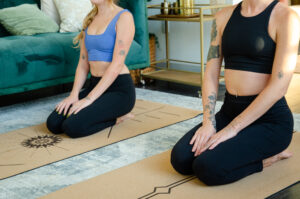
Breathing technique to improve your yoga practice
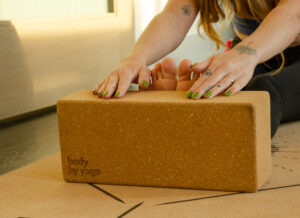
Benefits of yoga before bed
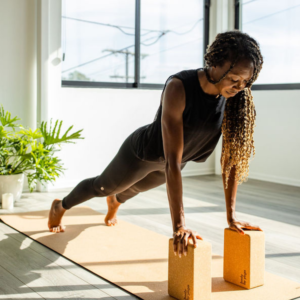
Taking the next step to more challenging yoga
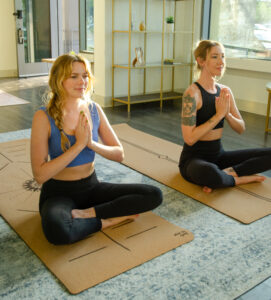
Hatha vs Power yoga
Related Articles
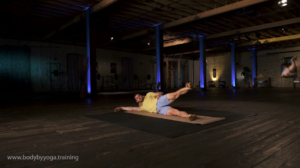
Stretching and Strengthening your hips
In this workout we start slow to warm up your hips. Utilizing low impact workouts like this can be important for beginners and yoga veterans

Hatha vs Power yoga
We’ve created our own unique style of slow burn power yoga that combines Hatha yoga, power yoga, bodyweight exercises and physical therapy. This way in

The importance of maintaining correct alignment
Everything in your body is connected, so when one muscle isnt aligned properly it can be a slippery slope to injury. Building a solid foundation
